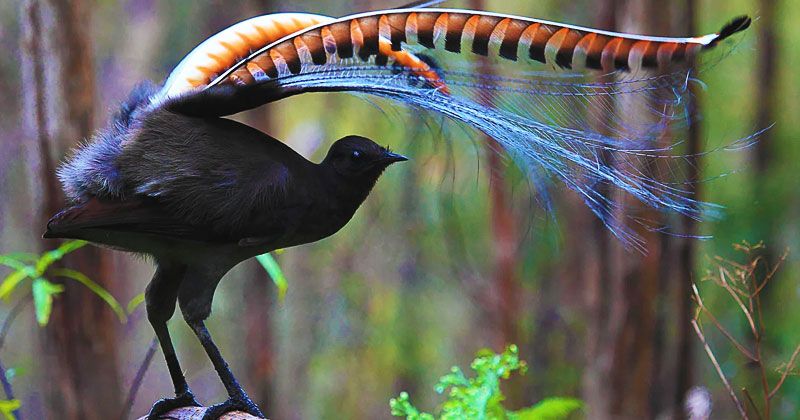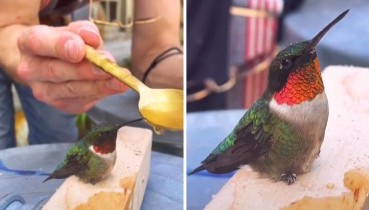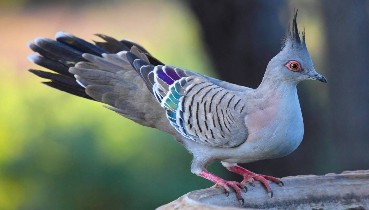In 1969, Australian park ranger Neville Fenton recorded an unusual song in Sherbrooke Forest near Melbourne. The song sounded like a flute being played by a human, but upon investigation, Fenton discovered that it was actually a lyrebird mimicking the sound. This discovery led to an incredible story about the lyrebird’s ability to mimic sounds.
Lyrebirds are known for their remarkable ability to mimic sounds, including the songs of other birds and human-made sounds. However, the flute-like song recorded by Fenton was particularly impressive. After analyzing the recording, zoologist Norman Robinson identified the two songs that the lyrebird was mimicking as “The Keel Row,” a traditional English folk song, and “Mosquito’s Dance,” a popular tune from the 1930s.
Robinson’s investigation led him to conclude that the lyrebird had learned the songs from a flute-playing farmer who had lived near the forest in the 1930s. The farmer had taught the songs to a pet lyrebird, which had then passed them on to its offspring when it was released into the wild.
The story of the lyrebird that mimicked a flute has since become a well-known example of the species’ remarkable ability to mimic sounds. The lyrebird is native to Australia and is considered a protected species. Its incredible vocal abilities make it a popular attraction in wildlife parks and zoos around the world.
The lyrebird’s incredible vocal abilities are the result of a complex vocal organ called a syrinx. The syrinx is located at the base of the bird’s trachea and is responsible for producing the complex sounds that lyrebirds are known for.
The syrinx is composed of two sets of muscles that can independently control the airflow and tension of the vocal cords. This allows lyrebirds to produce a wide range of sounds, including high-pitched whistles, low-pitched rumbles, and even human speech.
Lyrebirds are also able to manipulate the shape of their vocal tract to produce different sounds. By altering the position of their beak, tongue, and throat, lyrebirds can create a wide range of complex sounds that mimic the calls of other birds, as well as human-made sounds such as car alarms and camera shutters.
Interestingly, male lyrebirds are known for their elaborate courtship displays, which involve singing and dancing to attract females. During these displays, males will often mimic the calls of other birds and even incorporate human-made sounds into their songs.
Overall, the lyrebird’s incredible vocal abilities are the result of a unique combination of vocal anatomy, muscular control, and learned behavior. As such, these birds continue to fascinate and amaze scientists and bird enthusiasts alike. In conclusion, the lyrebird’s flute-like song is a fascinating example of the species’ ability to mimic sounds.



 Hummingbird Flies Into Woman’s Workshop Asking For Help42 views
Hummingbird Flies Into Woman’s Workshop Asking For Help42 views 31 Amazing Things – India Is Famous For269 views
31 Amazing Things – India Is Famous For269 views The crested pigeon (Ocyphaps lophotes) is a bird found widely throughout mainland Australia except for the far northern tropical areas.579 views
The crested pigeon (Ocyphaps lophotes) is a bird found widely throughout mainland Australia except for the far northern tropical areas.579 views A 1,000-Year-Old Mummy Just Showed Up in Peru With a Full Head of Hair355 views
A 1,000-Year-Old Mummy Just Showed Up in Peru With a Full Head of Hair355 views The secret cave half an hour's drive from Liverpool59 views
The secret cave half an hour's drive from Liverpool59 views 10 delicately balanced rocks that defy gravity8099 views
10 delicately balanced rocks that defy gravity8099 views 10 Of The Worst Wedding Ideas Ever424 views
10 Of The Worst Wedding Ideas Ever424 views 10 Pics Of Extraordinary Weather Conditions And Phenomena1656 views
10 Pics Of Extraordinary Weather Conditions And Phenomena1656 views


